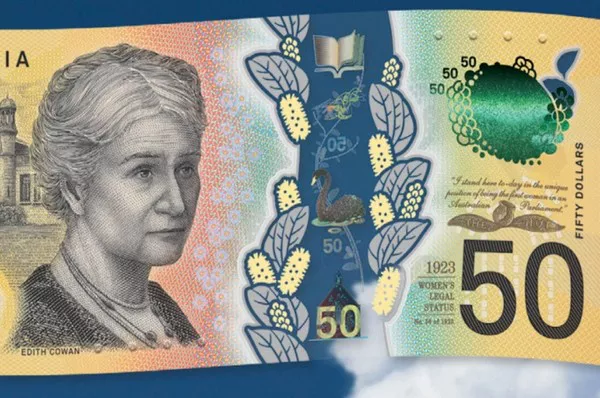The Australian Dollar (AUD) remained relatively stable on Thursday after experiencing two consecutive days of losses. The AUD/USD pair could see potential gains as the US Dollar (USD) faces increasing pressure following the release of the Federal Reserve’s (Fed) Beige Book, which highlighted signs of weakening economic conditions in the United States.
According to the Fed’s April Beige Book, concerns over tariffs have worsened the economic outlook across multiple US regions. Consumer spending showed mixed results, while the labor market exhibited signs of softening, with many districts reporting stagnant or slightly declining employment levels.
Westpac analysts forecast that the Reserve Bank of Australia (RBA) will cut interest rates by 25 basis points during its meeting on May 20. The RBA’s policy decisions in recent quarters have been heavily reliant on economic data, making it challenging to predict the Bank’s actions with certainty beyond the next meeting.
US President Donald Trump commented that China would determine how soon tariffs could be reduced, adding that the US would set tariff rates in the next two to three weeks. Trump remarked that if a trade deal isn’t reached, the US will “simply set the price,” leaving it up to China to decide whether to proceed. He also noted that China isn’t currently conducting any business with the US, maintaining a 145% tariff rate. However, National Economic Council Director Kevin Hassett suggested that a full trade deal with China could take 2-3 years.
In Australia, preliminary data from Judo Bank indicated that private sector activity grew for the seventh consecutive month in April, with continued expansion in both manufacturing and services sectors.
The US Dollar Index (DXY), which tracks the USD against six major currencies, edged lower after two days of gains, trading near 99.60 at the time of writing. The Greenback faced headwinds following the release of mixed S&P Global Purchasing Managers Index (PMI) data. The flash S&P Global Composite PMI for April dropped to 51.2 from 53.5, indicating a slowdown in overall business activity. Although the Manufacturing PMI inched up to 50.7, the Services PMI fell sharply to 51.4 from 54.4, signaling weaker demand in the services sector.
S&P Global’s Chris Williamson noted that the growth momentum is slowing, with persistent inflationary pressures complicating the Federal Reserve’s ability to balance monetary policy effectively. Additionally, Hassett mentioned that the US Trade Representative (USTR) has 14 meetings scheduled with foreign trade ministers, and 18 written proposals have been received, with China remaining open to negotiations.
US Treasury Secretary Scott Bessent supported the US Dollar, describing the ongoing tariff standoff as “unsustainable,” hinting at a possible de-escalation. Meanwhile, President Trump reassured investors that he had no intention of removing Federal Reserve Chairman Jerome Powell, helping to ease concerns about central bank independence and future policy direction.
Market sentiment was also boosted by Trump’s optimism regarding trade negotiations with China, stating that discussions were progressing well. While tariffs on Chinese goods would not be as high as 145%, they would not be fully eliminated either.
The White House announced that progress was being made in negotiating trade deals to ease the broad tariffs imposed earlier this month. According to US Press Secretary Karoline Leavitt, 18 countries have already submitted trade proposals to the US, and President Trump’s team will meet with representatives from 34 nations this week to explore potential agreements.
Federal Reserve Board Governor Adriana Kugler emphasized that the US import tariffs are likely to push prices higher, urging the Fed to maintain current short-term interest rates until inflationary pressures subside.
On the Australian front, the Judo Bank Manufacturing PMI for April dipped to a two-month low of 51.7, compared to 52.1 in March. While manufacturing output remained in expansion, new orders showed only modest growth. The Services PMI slightly decreased to 51.4 from 51.6 in the previous month, and the Composite PMI also eased to 51.4 from 51.6.
The AUD/USD pair was trading near 0.6360 on Thursday, with technical indicators suggesting a bullish outlook. The pair remains above the nine-day Exponential Moving Average (EMA), and the 14-day Relative Strength Index (RSI) stays above 50, indicating continued upward momentum.
Immediate resistance is seen at the recent four-month high of 0.6439, achieved on April 22. A decisive break above this level could trigger a rally toward the five-month high of 0.6515. On the downside, immediate support is located at the nine-day EMA of 0.6346, with stronger support near the 50-day EMA at 0.6296. A sustained drop below these levels could negate the bullish outlook and lead to deeper losses, potentially testing the March 2025 low of around 0.5914.
Related Topics:
- What Currency Should I Take to Australia?
- Who Is on the $20 Note in Australia?
- Has the Australian $50 Note Changed?



